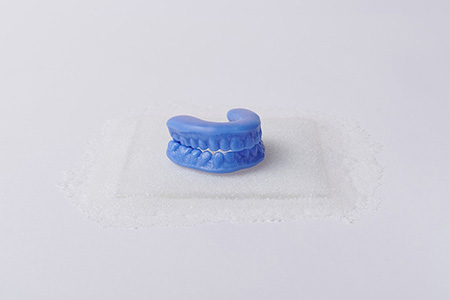
Continuing through February 19, 2022
In “No Body,” Kansas City artist Casey Whittier and Chicagoan Mike Rea realize an unlikely pairing of absurdity and serious craft. Here, woodworking (Rea’s) and ceramic and glass (Whittier’s) are the materials for objects and imagery of a very personal nature. While in the past both sculptors have created highly realistic facsimiles of vernacular objects, in “No Body” both Whittier and Rea have shrugged off hyper-realism. The intentionally unpolished finish of these pieces underscores the process of their fabrication, and the relationship between the artist’s hand and the intimate nature of that which is depicted.
Whittier’s pieces represent the kinds of things that are worn often, and close to the body. Baseball caps and eyeglasses are rendered in dense, cast glass, capturing the textural nuances of that which they index: tiny bolts at the hinges of the temples, the folds of mesh backs, the relief stitching of a John Deere logo. A t-shirt hangs from a steel post in the wall, the garment — with “All Vintage Guitars go to Heaven” emblazoned across the chest — is crafted from delicate, interlocking loops of clay. These objects feel fragile, as if the preciousness of someone’s well-worn items has been transferred into, and even accentuated by the fineness of the media into which they have been cast. Whittier’s shirt, glasses and hats seem uniquely specific to someone, although it’s her cast glass sets of teeth that have singular auras. In “Proof: We” and “I and You,” sets of top and bottom teeth are stacked upon each other, suggesting an orthodontic retainer or a mouthguard as a potential mold for the cast. In Whittier’s hands, what is essentially a dental record is also a profoundly poetic gesture of intimacy.
Whittier’s sentimentality is counterbalanced by Rea’s sublime absurdity. Several large-scale works on paper are rendered using a mosaic-like method, with tiny squares of wood scrap adhered to gessoed paper. In “Coda Chrome Away” and other works the wooden pieces are colored in with squares of ink. Up close, these works have an earthy, timeless quality, the rough, gessoed paper contrasting the geometry of the wooden tiles and their velvety smooth surfaces. They feel like studies in material and abstraction, enough to lose yourself in their seriousness before realizing what it is you’re looking at. These are not abstractions, after all, but images of strappy leather gear binding up invisible bodies of negative space. “Garter Harness / The Doors, Fan,” and “Back View / Venus of Somewhere in Germany” feel campy and playful. They are triple-framed in wood of various tones, as if to “triple down” on the seriousness of Rea’s craftsmanship.
“No Body” is a lot of fun, with its unexpected dualities of high and low, the vernacular and the refined, earnestness and absurdity. However, there is a palpable melancholy surrounding it all. The leather in Rea’s images is wrapped around empty space; the hats and glasses of Whittier’s castings reverberate with the energy of the body that had, at one time, worn them. The fact that there are no bodies here, consistent with the exhibition’s title, makes one wonder whether, in non-pandemic times, this absence would feel so acute as it does right now.
